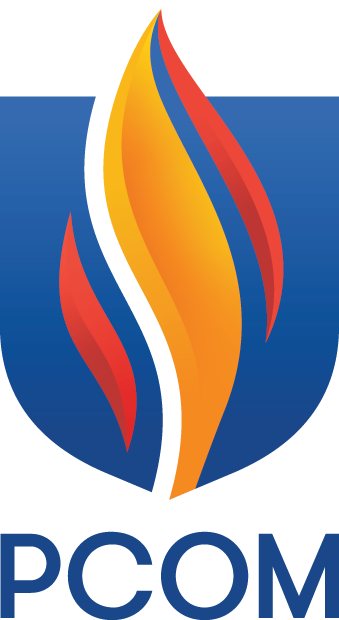Stitching a Legacy
Commemorating 125 Years
March 6, 2024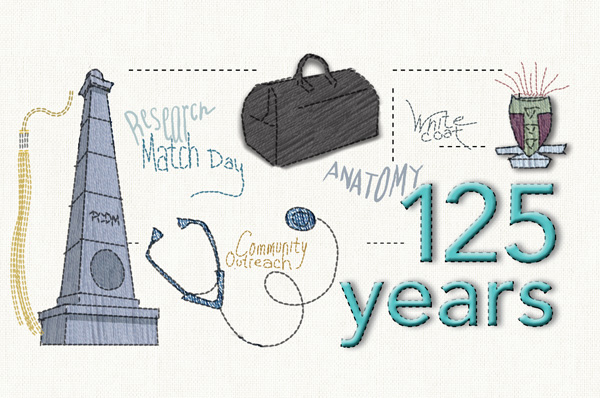 By Jennifer Schaffer Leone and Kristen Hopf
By Jennifer Schaffer Leone and Kristen Hopf
PCOM stands as a living testament to the myriad stories that have shaped its existence.
As we commemorate our 125th anniversary, let us take an opportunity to unravel some of the interconnected narratives that
have brought us to this significant juncture—the people, the programs and the moments
that have made our College the remarkable institution that it is today.
Osteopathic Pioneer
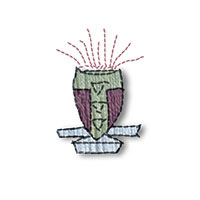 Osteopathic medicine as we know it began with frontier physician Andrew Taylor Still, MD, who introduced its concepts in 1874. Dissatisfied with the effectiveness of 19th-century
medicine, Dr. Still offered a basic tenet: the human body was much like a machine,
one that would function well if all its parts were in proper mechanical relationship.
Osteopathic medicine as we know it began with frontier physician Andrew Taylor Still, MD, who introduced its concepts in 1874. Dissatisfied with the effectiveness of 19th-century
medicine, Dr. Still offered a basic tenet: the human body was much like a machine,
one that would function well if all its parts were in proper mechanical relationship.
Dr. Still’s story is one of personal conviction, political controversy and medical
nonconformity. Over the course of his life, he was a tireless student of health and
the human body, an abolitionist, a Civil War surgeon, a state legislator and a supporter
of equal rights and women’s suffrage. As founder of Kirksville College of Osteopathic
Medicine, he is the pioneer of osteopathic education as well.
First Woman Graduate
Gene G. Banker, DO 1900, was the first woman student and one of the original two graduates
of Philadelphia College and Infirmary of Osteopathy. She lived to her 99th year, passing
away in 1969.
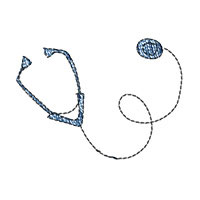 After graduation, Dr. Banker opened the Women’s Infirmary of Osteopathy at 1533 Chestnut
Street. Her practice partner was Lillian L. Bentley, DO 1901, and the two specialized
in “diseases of women and children.”
After graduation, Dr. Banker opened the Women’s Infirmary of Osteopathy at 1533 Chestnut
Street. Her practice partner was Lillian L. Bentley, DO 1901, and the two specialized
in “diseases of women and children.”
In 1916, Dr. Banker moved her practice to 526 West Hortter Street, Germantown, news
she published in The Osteopathic Physician (Feb. 1917). She practiced in Germantown for the remainder of her life—a beloved
and skilled general practitioner.
One of her longtime patients described her as having “a cheery optimism, faith, humor
and a zest for living. She was little more than five feet tall, thin of face with
lovely graying hair. But she was wiry, and with strong fingers and wrists as she administered
treatments. She never became wealthy because her services were frequently contributed
when patients couldn’t pay.”
Philadelphia Journal of Osteopathy
Beginning publication in 1899 and ceasing around 1914, the Philadelphia Journal of Osteopathy was the College’s first publication. Mason Wiley Pressly, DO, served as the original
editor. The journal promoted the emerging science of osteopathy as well as providing
news about enrollment and study at the newly founded College and Infirmary of Osteopathy.
A resurgence of the Philadelphia Journal of Osteopathy came about in 1927 with the publication of The Osteopathic Digest. The name was changed to The Digest in 1973.
Educating Nurses
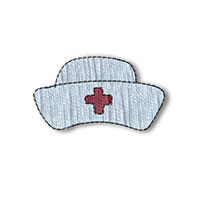 The School of Nursing opened in 1917, when entering students wore homemade gingham
uniforms, and, as was customary in most training schools of the time, the course of
instruction was two years.
The School of Nursing opened in 1917, when entering students wore homemade gingham
uniforms, and, as was customary in most training schools of the time, the course of
instruction was two years.
Like her classmates, Jean Sheperla, RN 1919, DO 1926, experienced every aspect of
surgical nursing, from assisting doctors in the OR to sterilizing the instruments
after an operation. She was later accepted into and graduated from the College’s osteopathic medical program.
Student nurses were taught osteopathic techniques, making the School of Nursing distinctive.
The war years especially seemed to bring out the best in the school, and in the 1940s,
PCOM provided nursing staff for military and civilian hospitals. The School of Nursing
closed its doors in 1960.
Fraternities
In the early 20th century, a tradition of fraternities was beginning at the College.
The Zeta chapter of Phi Sigma Gamma was founded in 1917, with the goal of facilitating
social and professional relationships between medical students and practicing physicians.
Membership was open to male students, and a variety of meetings, educational seminars,
parties and banquets were held throughout the year at the Phi Sig fraternity house,
located at 270 West Walnut Lane, Philadelphia.
Lambda Omicron Gamma (LOG), originally known as the Blue and White Club, was established
in 1919 by Jewish medical students seeking mentoring, postgraduate training and employment.
By 1929, LOG became a national organization, and the PCO Philadelphia chapter was
named the Caduceus Chapter.
In the 1930s, osteopathic fraternities at the College also included Theta Psi, Iota
Tau Sigma and the Atlas Club. By the 1950s, almost all osteopathic institutions had
active LOG chapters, and membership was open to women and minorities, who were excluded
from other fraternities on the basis of race or gender.
Today, medical and graduate students at all three PCOM locations are members of various national organizations such as Kappa Psi Pharmaceutical Fraternity and Sigma Sigma Phi Honorary Osteopathic
Service Fraternity.
The Survivor’s Club
This organization began in 1946 when Galen S. Young, Sr., DO ’35, professor emeritus
of surgery and later chancellor, invited retiring intern and resident staff to a banquet
“in appreciation of services rendered to his patients while in the Philadelphia College
of Osteopathy and Hospital.” According to records, there were 12 in attendance at
the first dinner, and “filet mignon was the main order of business.”
The banquet and ensuing awards ceremony became an exclusive event, held each October.
Interns and residents who “survived” the final year of their education at the Hospital
of PCOM would be the guests of Dr. Young and other members of the club.
Today, this tradition continues under the auspices of Graduate Medical Education.
Booth Doctors
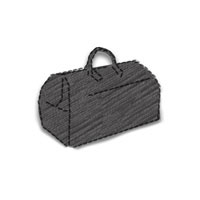 In 1929, the College completed construction of an 80-bed hospital at 48th and Spruce Streets. Here, a basement clinic—comprising rows of 40 numbered booths—would thrive for roughly
half a century as a service to the community and a training ground for third- and
fourth-year students, aptly called “booth doctors.”
In 1929, the College completed construction of an 80-bed hospital at 48th and Spruce Streets. Here, a basement clinic—comprising rows of 40 numbered booths—would thrive for roughly
half a century as a service to the community and a training ground for third- and
fourth-year students, aptly called “booth doctors.”
New patients registered in the general clinic on Monday, Wednesday and Friday afternoons.
Pediatrics had its own clinic on Tuesdays and Thursdays. After an interview with the
head of the Social Service Clinic, each patient was assigned to a student physician
and a booth number.
“We spent three months in the clinic and we had our own little cubicles which they
referred to as booths, and many of our patients referred to us as their booth doctors,”
recalled Eleanor V. Masterson, DO ’57, in an oral history. “We were given our own
little clientele, and we followed those patients for three months. If any of their
family members would register in the clinic, we also got those patients.”
Clinic patients having acute problems or needing surgery were referred to the hospital
wards free of charge.
The Follies
In the 1950s in the College’s 48th Street auditorium, PCOM students resurrected an
annual satirical show of musical performances that had thrived in the 1920s and 1930s.
Held alongside a Christmas party in the hospital for patients and the community, the
humorous performances showcased student parodies of the faculty, administration and
even themselves. In the 1980s, the show evolved into the “Flounders’ Day Follies” and then simply the “Follies.”
What did the Follies mean to the PCOM community? Bruce Kornberg, DO ’78, FACC, FACOI,
reflects: “It was a comic relief, a morale booster, and something to look forward
to at the end of exams. In my days, we did it toward the end of the semester and it
was a lot of work, but we all participated. It was a fun break for us, and we used
it to get back at the professors—the highlight of the year! You couldn’t get a seat
in the place. Everyone came. You had to be careful; even Dr. Rowland was fair game!”
The Follies was later scheduled as part of Founders’ Day Weekend; the annual tradition
continued through the early 2000s.
PCOM Rugby Squad
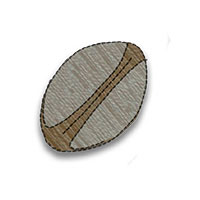 Though athletics had been a part of student life since 1910 with the fielding of track,
swimming, fencing, hockey, baseball and basketball teams, the fall of 1974 marked
the arrival of PCOM’s men’s rugby team. In its inaugural year, the team was made up of 40 students and played against such
opponents as Temple Medical School, Villanova Law School and St. Joseph’s College.
Hale T. Peffall, Jr., former executive director of alumni relations and development,
was the longtime coach of the PCOM rugby squad and spearheaded the establishment of
the graduate rugby divisions along the East Coast.
Though athletics had been a part of student life since 1910 with the fielding of track,
swimming, fencing, hockey, baseball and basketball teams, the fall of 1974 marked
the arrival of PCOM’s men’s rugby team. In its inaugural year, the team was made up of 40 students and played against such
opponents as Temple Medical School, Villanova Law School and St. Joseph’s College.
Hale T. Peffall, Jr., former executive director of alumni relations and development,
was the longtime coach of the PCOM rugby squad and spearheaded the establishment of
the graduate rugby divisions along the East Coast.
On several occasions, PCOM’s rugby team traveled internationally to compete against
other collegiate teams, including trips to the Bahamas in 1985 and Ireland in 1994.
To celebrate the 20th anniversary of its rugby club, PCOM hosted the 1994 U.S. Rugby
East Graduate School Championships. PCOM ruggers were often honored at the annual
PCOM Sports Banquet, which recognized seniors who played on a PCOM sports team for
at least two seasons.
A Wishbone Tradition
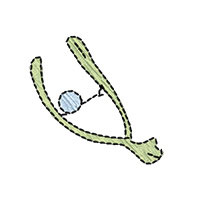 For nearly a decade, beginning at the 1968 Commencement Dinner, Sherwood R. Mercer,
AB, AM, dean, and his wife, Rowena, gifted sterling silver wishbone pins to the wives
of graduating students.
For nearly a decade, beginning at the 1968 Commencement Dinner, Sherwood R. Mercer,
AB, AM, dean, and his wife, Rowena, gifted sterling silver wishbone pins to the wives
of graduating students.
It was said that physicians’ spouses need three things to withstand the effects of
medical school on their families: a backbone, a funny bone and a wishbone. The Mercers
decided that the spouses already had plenty of backbone and funny bone after four
years, so they would provide the wishbone as a “symbol of hope to reach their material
and spiritual goals and good wishes for the future.”
The last presentation was in 1976 when Dr. Mercer retired from the College.
The Philadelphia Fair
The inaugural Philadelphia Fair was held on September 6, 1980. Family tickets for
this first annual fundraising event were $5 and offered access to games and amusements,
prizes, baked goods, music, balloons, an antique sale, an art and print show and more.
Members of the PCOM community were invited to bring their children to delight in the
merriment, including clowns and an organ grinder and his monkey. To promote the event,
a large balloon reading “The Philadelphia Fair” floated 200 feet above campus, and
on the eve of the Fair, a champagne reception was held to preview the antiques and
art show that would be on display at Saturday’s main event.
The fair was held throughout the 1980s.
Puppet Ambassadors for Community Health
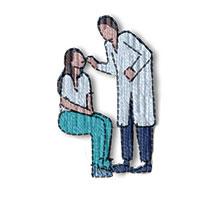 In 1988, Oliver C. Bullock, DO ’78, who served as director of PCOM’s Healthcare Centers, worked with “The Muppet Show” and the Nick Swindlin Puppet Theater to develop a
program to allay children’s fears and increase their understanding of medical instruments
used in physical exams. The collaboration resulted in a staged program that featured
puppet characters on an imaginary trip to a physician’s office.
In 1988, Oliver C. Bullock, DO ’78, who served as director of PCOM’s Healthcare Centers, worked with “The Muppet Show” and the Nick Swindlin Puppet Theater to develop a
program to allay children’s fears and increase their understanding of medical instruments
used in physical exams. The collaboration resulted in a staged program that featured
puppet characters on an imaginary trip to a physician’s office.
For many years, PCOM staff took the show to elementary schools throughout the Philadelphia
School District as well as to local hospitals.
PCOM Golf Classic
Chaired by Albert D’Alonzo, DO ’56, 135 golfers enjoyed a picture-perfect day of golf and camaraderie as PCOM presented
its inaugural Golf Classic on September 20, 1993, at Torresdale-Frankford Country
Club. The sold-out event raised $50,000 for primary care education and community outreach
programs.
This popular outing would continue for 25 years, attracting philanthropic support
and bringing many prominent community members onto the greens to focus attention on
the PCOM Healthcare Centers and their critical significance to the communities they
serve.
Meta L. Christy Award
Twenty-two years after Philadelphia College and Infirmary of Osteopathy’s founding,
Meta L. Christy, DO 1921, would graduate as the College’s first African American student and the first African
American doctor of osteopathic medicine in the nation as recognized by the American
Osteopathic Association.
The honor that bears her name, the Meta L. Christy Award, was first presented by the
PCOM chapter of the Student National Medical Association in 1989. It has been given
since that time at the Annual Recognition Reception, which acknowledges the efforts
of individuals who have been involved in establishing and realizing the role played
by minorities in the osteopathic profession.
Commitment to the South
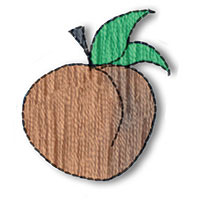 PCOM’s commitment to the South began in the early 2000s. An assessment of growing
health disparities in the southern United States substantiated an infrastructure for
support of new osteopathic and graduate healthcare-focused education programs.
PCOM’s commitment to the South began in the early 2000s. An assessment of growing
health disparities in the southern United States substantiated an infrastructure for
support of new osteopathic and graduate healthcare-focused education programs.
Under the leadership of Matthew Schure, PhD, president and chief executive officer, PCOM chose suburban Atlanta for its first
branch campus. By 2005, PCOM Georgia, located in Suwanee, Gwinnett County, welcomed its first class of 80 doctor of osteopathic
medicine students.
Over the years, as PCOM Georgia continued to expand its academic degree programs, it became apparent that the South Georgia region did not have the same local access
and attention for similar opportunities. Pursuits began to take shape when Jay S. Feldstein,
DO ’81, president and chief executive officer, PCOM, and representatives from the South
Georgia Medical Education and Research Consortium signed a memorandum of agreement
in 2016. By 2019, construction of the Moultrie facility was completed and a diverse
group of 59 DO students began classes at PCOM South Georgia.
Growth of Graduate Programs
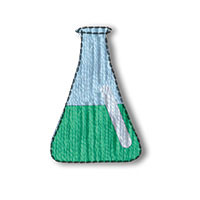 After nearly a century of training osteopathic physicians, PCOM expanded its academic
offerings in 1993 to include a Master of Science in Biomedical Sciences degree. Leonard H. Finkelstein, DO ’59, MSc ’63, FACOS, past president and chancellor, announced the news in the President’s Perspective (winter 1994): “With the hand of the College on the pulse of the needs of our students—and
prospective students—the College launched a graduate program in biomedical sciences.
In August, the premier class of 35 students took their seats in the two-year evening
program. The new program fills a critical need for students who require additional
preparation for admission to PCOM or to other institutions.”
After nearly a century of training osteopathic physicians, PCOM expanded its academic
offerings in 1993 to include a Master of Science in Biomedical Sciences degree. Leonard H. Finkelstein, DO ’59, MSc ’63, FACOS, past president and chancellor, announced the news in the President’s Perspective (winter 1994): “With the hand of the College on the pulse of the needs of our students—and
prospective students—the College launched a graduate program in biomedical sciences.
In August, the premier class of 35 students took their seats in the two-year evening
program. The new program fills a critical need for students who require additional
preparation for admission to PCOM or to other institutions.”
Military Trailblazers
Preceding a change of command ceremony, Lieutenant General Mary Krueger Izaguirre,
DO ’95, was sworn in as the 46th Surgeon General of the U.S. Army on January 25, 2024.
Of the 46 U.S. Army Surgeons General, she is the second osteopathic physician.
The first osteopathic physician to hold the rank was Lieutenant General Ronald Ray Blanck, DO ’67. He served as the 39th Surgeon General of the U.S. Army from 1996 to 2000. Dr. Blanck,
who served a tour in Vietnam as a battalion surgeon, was one of the first DOs to practice
medicine as a commissioned Army officer.
Hail to the Chief
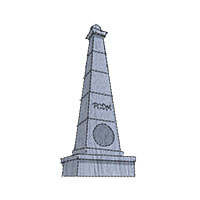 According to records kept at the Richard Nixon Presidential Library and Museum, W.
Kenneth Riland, DO ’36, provided osteopathic manipulative treatment to President Richard M. Nixon at the White House two to four times a month in 1969
and 1970. He also traveled with the president to China and the Soviet Union.
According to records kept at the Richard Nixon Presidential Library and Museum, W.
Kenneth Riland, DO ’36, provided osteopathic manipulative treatment to President Richard M. Nixon at the White House two to four times a month in 1969
and 1970. He also traveled with the president to China and the Soviet Union.
U.S. Navy Captain Sean Patrick Conley, DO ’06, FACEP, served as White House physician and physician to the president from 2018 to 2021.
He treated President Donald J. Trump when he tested positive for COVID-19 and acted
as the president’s chief White House medical advisor during the pandemic.
U.S. Navy Commander Matthew V. Speicher, DO ’14, presently serves as White House physician,
Joseph R. Biden administration. He travels with the president, vice president and
their families.
The Sweetest Place on Earth for CME
Hershey, Pennsylvania, has played host to PCOM’s Family Weekend CME for nearly three
decades. The continuing medical education program was initiated in 1993 by the late
David H. Loughran Jr., DO ’83, a longtime professor and chair of infectious disease,
and Harry J. Morris, DO ’78, MPH, professor and chair, family medicine. Today it is moderated by Daniel J. Parenti, DO ’87, FCCP, FACOI, chair and professor, internal medicine, and Erik G. Polan, DO ’07, FACOI, assistant professor, internal medicine.
Some 6,000 physicians and allied health professionals have participated in this popular
continuing education program
over the years.
About Digest Magazine
Digest, the magazine for alumni and friends of Philadelphia College of Osteopathic Medicine,
is published by the Office of Marketing and Communications. The magazine reports on
osteopathic and other professional trends of interest to alumni of the College’s Doctor of Osteopathic Medicine (DO) and graduate programs at PCOM, PCOM Georgia and PCOM South Georgia.

 By Jennifer Schaffer Leone and Kristen Hopf
By Jennifer Schaffer Leone and Kristen Hopf Osteopathic medicine as we know it began with frontier physician
Osteopathic medicine as we know it began with frontier physician  After graduation, Dr. Banker opened the Women’s Infirmary of Osteopathy at 1533 Chestnut
Street. Her practice partner was Lillian L. Bentley, DO 1901, and the two specialized
in “diseases of women and children.”
After graduation, Dr. Banker opened the Women’s Infirmary of Osteopathy at 1533 Chestnut
Street. Her practice partner was Lillian L. Bentley, DO 1901, and the two specialized
in “diseases of women and children.” The School of Nursing opened in 1917, when entering students wore homemade gingham
uniforms, and, as was customary in most training schools of the time, the course of
instruction was two years.
The School of Nursing opened in 1917, when entering students wore homemade gingham
uniforms, and, as was customary in most training schools of the time, the course of
instruction was two years. In 1929, the College completed construction of an 80-bed hospital at
In 1929, the College completed construction of an 80-bed hospital at  Though athletics had been a part of student life since 1910 with the fielding of track,
swimming, fencing, hockey, baseball and basketball teams, the fall of 1974 marked
the arrival of PCOM’s
Though athletics had been a part of student life since 1910 with the fielding of track,
swimming, fencing, hockey, baseball and basketball teams, the fall of 1974 marked
the arrival of PCOM’s  For nearly a decade, beginning at the 1968 Commencement Dinner, Sherwood R. Mercer,
AB, AM, dean, and his wife, Rowena, gifted sterling silver wishbone pins to the wives
of graduating students.
For nearly a decade, beginning at the 1968 Commencement Dinner, Sherwood R. Mercer,
AB, AM, dean, and his wife, Rowena, gifted sterling silver wishbone pins to the wives
of graduating students. In 1988,
In 1988,  PCOM’s commitment to the South began in the early 2000s. An assessment of growing
health disparities in the southern United States substantiated an infrastructure for
support of new osteopathic and graduate healthcare-focused education programs.
PCOM’s commitment to the South began in the early 2000s. An assessment of growing
health disparities in the southern United States substantiated an infrastructure for
support of new osteopathic and graduate healthcare-focused education programs. After nearly a century of training osteopathic physicians, PCOM expanded its academic
offerings in 1993 to include a
After nearly a century of training osteopathic physicians, PCOM expanded its academic
offerings in 1993 to include a  According to records kept at the Richard Nixon Presidential Library and Museum, W.
Kenneth Riland, DO ’36, provided
According to records kept at the Richard Nixon Presidential Library and Museum, W.
Kenneth Riland, DO ’36, provided 